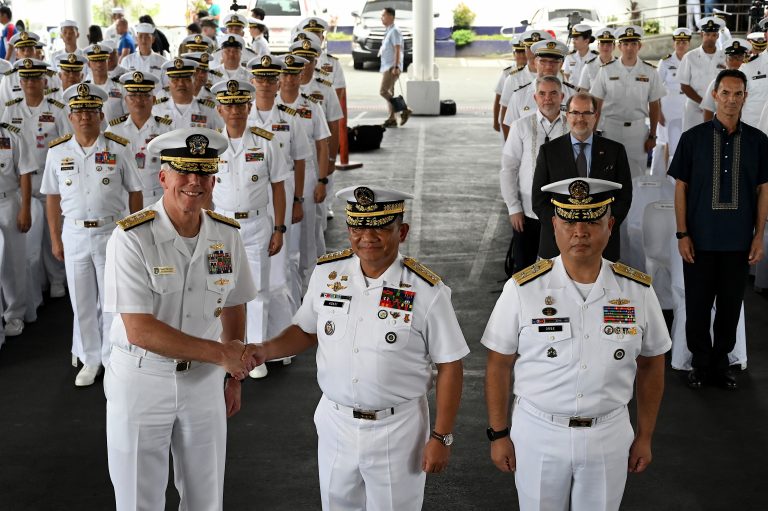Recently, as naval drills were being held by the Philippines, the U.S., and their allies in the South China Sea, China launched its own exercises in apparent retaliation.
Vessels and helicopters from the Southern Theater Command of the People’s Liberation Army (PLA) operated in different areas of the South China Sea, as part of “coordinated offensive and defensive combat drills,” a press release shared on the Navy’s WeChat account reads.
The release also stated that the main focus of the exercise was “anti-submarine warfare,” with at least two large guided missile destroyers, a Type 055 Yan’an (106) and a Type 052D Hefei (174), taking part as well as a submarine and a Z-9 anti-submarine helicopter.
During one scenario, a helicopter worked alongside a destroyers’ sonar systems conducting reconnaissance, which allows the flotilla to respond to any enemy submarine with a “tactical assault formation.”
Though no specific date was given for the drills, the communist-aligned newspaper Global Times said they happened “at a time when the U.S. and the Philippines are holding the 12-day multilateral exercise, Samasama,” close to the island of Luzon.
Success
You are now signed up for our newsletter
Success
Check your email to complete sign up
“Since August, the Philippines has been provoking China by sending vessels to trespass into waters near Chinese islands and reefs in the South China Sea and hyping up Chinese interceptions,” it said.
Recently, the navies of both China and the Philippines almost came to blows following near-collisions and supposed intrusions into each other’s claimed territories and Manila removed a floating barrier at a contested shoal that prevented its fishermen from entering the area, the Philippine Coast Guard said.
On Oct. 16, the Philippines accused China of making “dangerous maneuvers” near the island of Thitu — also known as Pag-asa Island in the Philippines — after a Chinese vessel tried to surpass the path of a Philippine vessel, al-Jazeera reported.
READ MORE:
- Ties Between Philippines and Australia Tighten as Joint Patrols Announced in South China Sea
- US and Vietnam Relations ‘Upgraded’ Following Biden’s Visit
- Japan Offers Military Aid to Philippines in Event of Taiwan Conflict
Allied exercises
On Oct. 14, the Samasama military exercises — named after the Tagalog word for “together” — concluded, with forces from participating countries returning home.
The two-week-long maritime training activity saw troops and vessels from the Philippines, the U.S., Australia, Canada, France, Japan, the UK, and Malaysia, all taking part in “land phases as well as anti-submarine warfare, search and rescue operations and air defense drills.”
The focus of the exercise was to bolster “military cooperation” between the Philippines, the U.S. and other nations against Beijing’s growing aggression.
In addition to the Samasama exercises, Washington, Tokyo, Canberra and Manila all participated in the first ever quadrilateral defense chief talks in June, planning several cooperation initiatives, which include joint maritime patrols in the South China Sea.
The Philippines and Australia signed a Strategic Partnership Agreement, discussing “a joint sail” in the South China Sea, Australian Foreign Minister Penny Wong said. The patrol will begin “in an appropriate maritime location as yet to be announced,” Wong said in a joint press conference with Philippine Foreign Minister Enrique Manalo on Oct. 10.
“The Philippines is fast emerging as a key partner for Australia in ASEAN, a very big change from the Duterte years,” Malcolm Davis, senior analyst at the Australian Strategic Policy Institute (ASPI), told Radio Free Asia (RFA).
“The same goes for the U.S.-Philippines relationship, so there’s an important integrated deterrence dimension here, which these closer relations underpin,” he added.
With the Marcos administration in power, U.S. troops were given access to four additional locations in Philippine territory, totaling up to nine locations. Having planned “force agreements” with Washington and Canberra, Manila is also seeking a third with Japan, allowing forces from the Japanese Self-Defense Forces to join in regional exercises.













